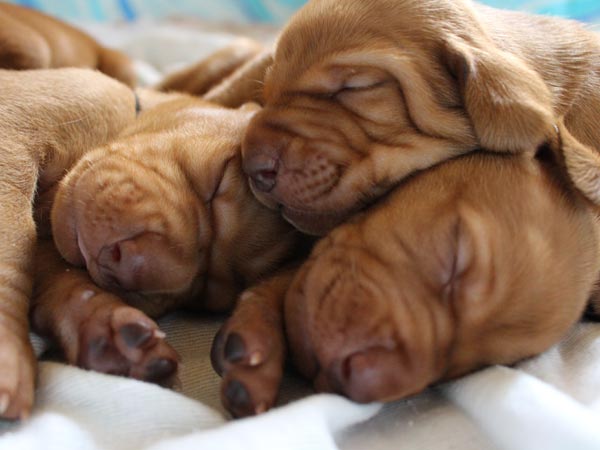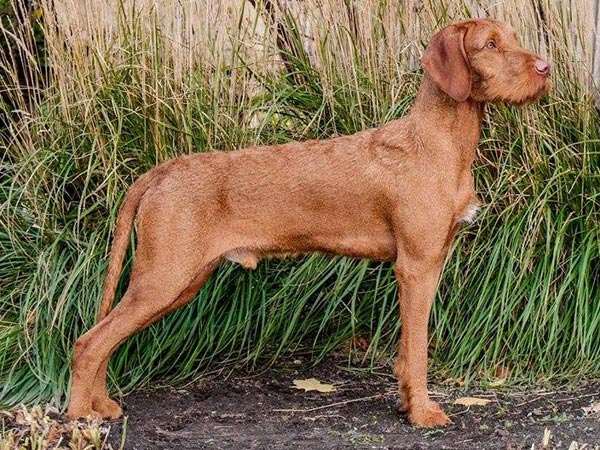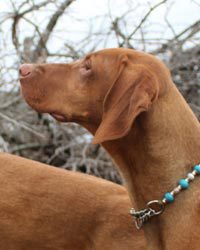Origin: Developed by the nomadic Magyar Hunters of ancient Hungary and later cherished and bred by the Hungarian Lords and Aristocracy, the Vizsla was designed to be a tough all purpose hunting dog of both fur and feather. First used with Falcons, they are a close working pointer that is able to work for hours in the field then curl up with the family at night. The Vizsla of today is very similar to those found 100’s of years ago and can still put in a full day’s work. The Smooth Vizsla was developed first, later fanciers created a wirehaired variety to get a more rugged dog. They are registered as separate breeds.
Height: Females 21″, Males 23″ (Wirehair Females 22″, Males 24″)
Weight: Females 50-55lbs, Males 60-65lbs
Colour: Golden rust, but can range from a lighter reddish gold to a darker golden red. The nose, eye and toenail colour must match the coat colour. There may be variations of rust within the coat, with lighter areas on the neck and behind the shoulder, and darker hair along the back. White is allowed only in a small area on the forechest. The Wirehaired Vizsla is a lighter colour, often without the shade variations.
Coat: The smooth Vizsla has a short, smooth, glossy coat. There is no undercoat. They are a medium shedding breed, with an increase in shedding in the spring and fall. The hair is course and almost waxy leaving very low odour. The Wirehaired Vizsla has a similar coat texture, however it is longer ( 1” to 1 ½”), and depending on the dog, they can have longer hair over the entire body, a broken coat or look more like a Smooth with a beard and bushy eyebrows.
Grooming: Grooming is minimal, bath only when necessary to avoid drying out the skin.The Wirehaired Vizsla may need hand stripping to keep the coat manageable.
Food: Good quality kibble or balanced raw diet. They can be picky about food sometimes and are not big eaters. 2 cups a day for an adult is average.
Training: Puppy classes are essential. This is a very smart breed and they learn quickly if trained properly.
House training: Consistency is key, they can learn quickly to go outdoors to relieve themselves.Crate training helps to keep the dog confined at night. Crates should also be used during travel, or when the pup cannot be watched to keep it out of trouble.
Exercise: At least an hour of off-leash exercise a day for adults, the more the better, you cannot tire this breed out. They make terrific running and cycling partners once grown as they have incredible endurance. With proper training as a puppy they are reliable off leash and want to stay close to their family. They can become destructive if bored, it is best when given a job and plenty of exercise.
Temperament: This is an extremely affectionate, even tempered breed that can be quite needy at times. They want to be with their family so should never be kept strictly outdoors, this is a breed that excels in homes where someone is home most of the day. They are highly trainable and make great family dogs, they are good with cats and other dogs, but due to a high prey drive should not be left alone with small animals and birds. Vizslas love everyone and are constantly happy. Although they are good with children, their active and happy nature can cause them to knock small children down.



